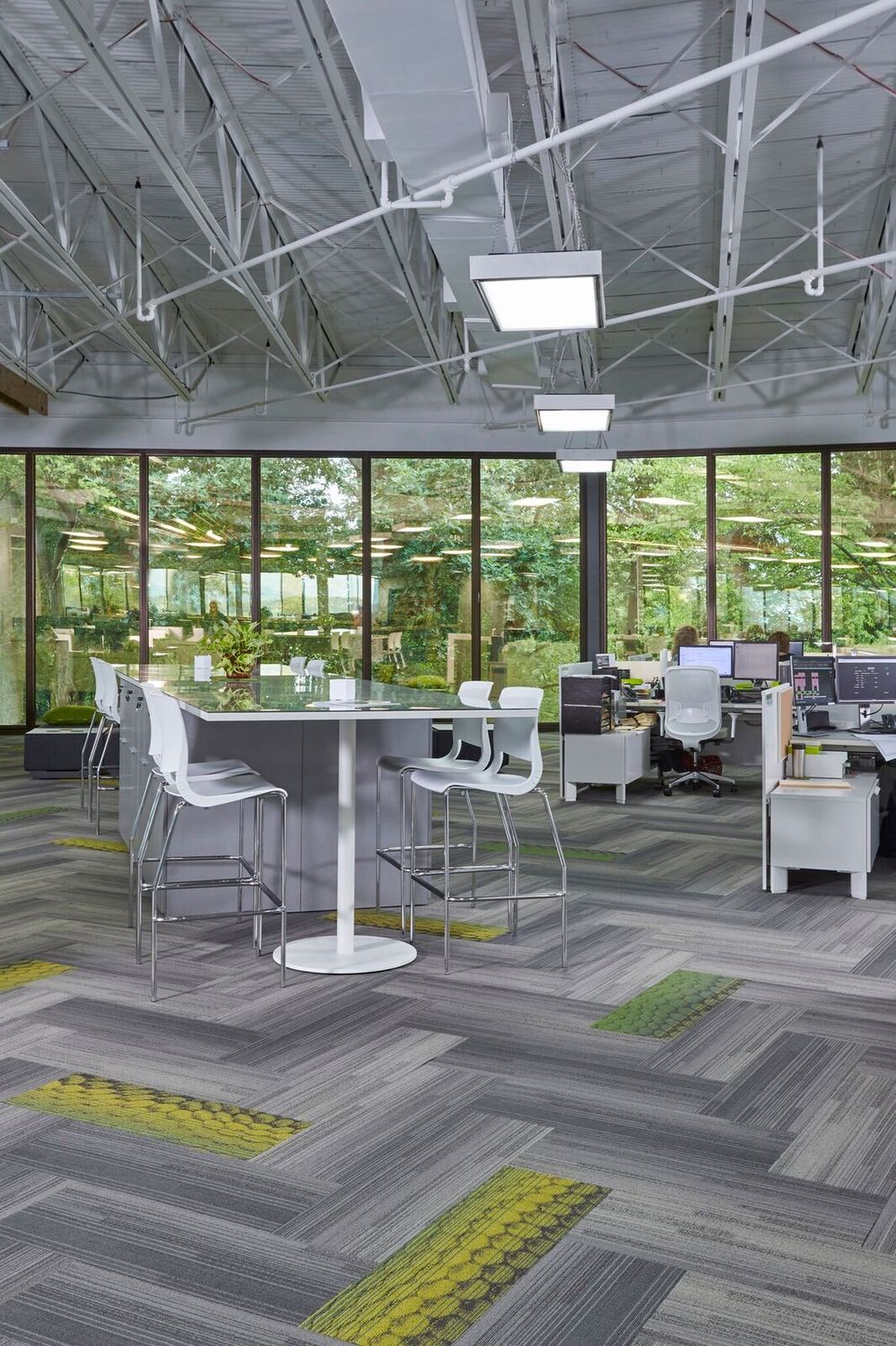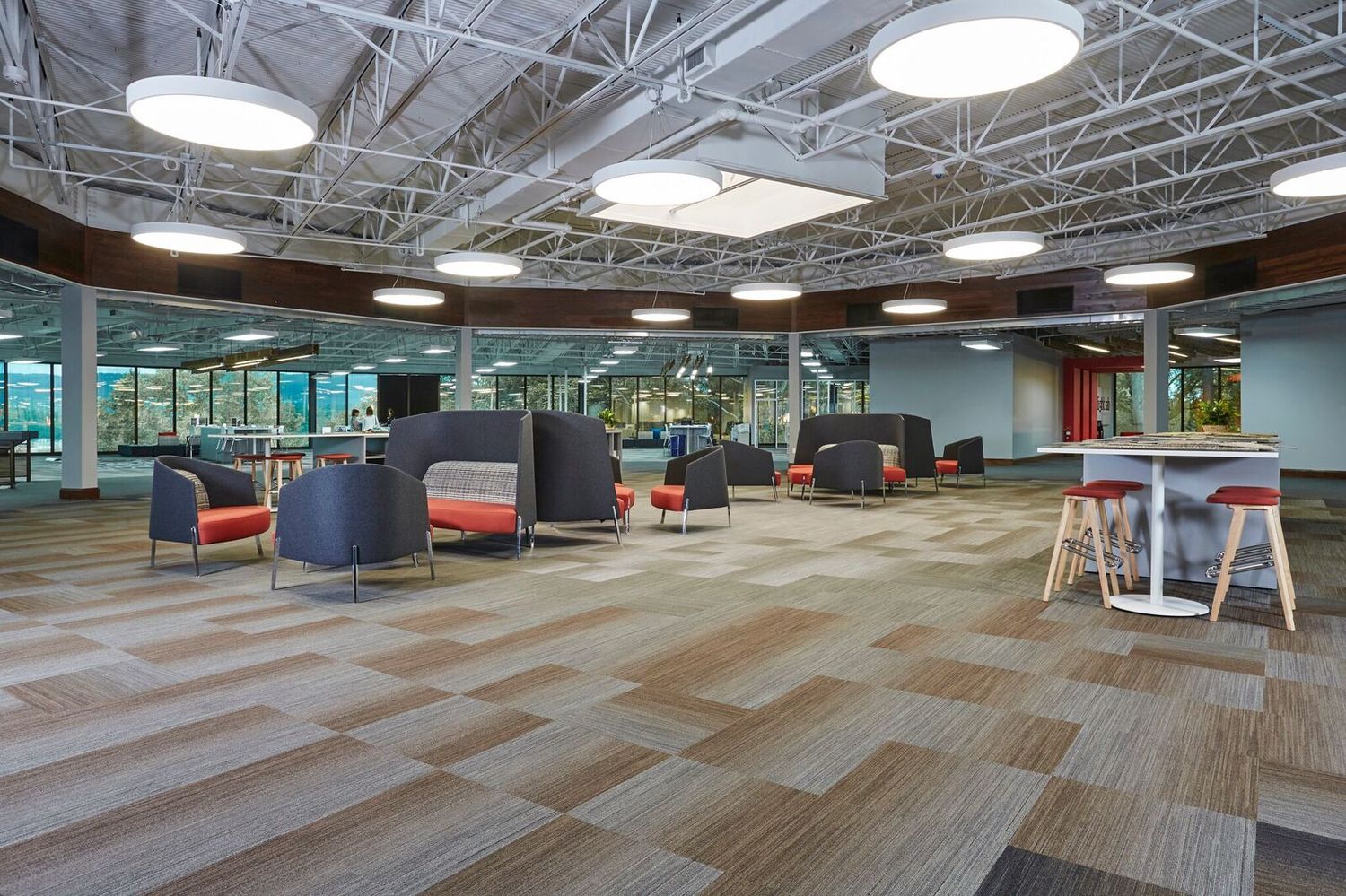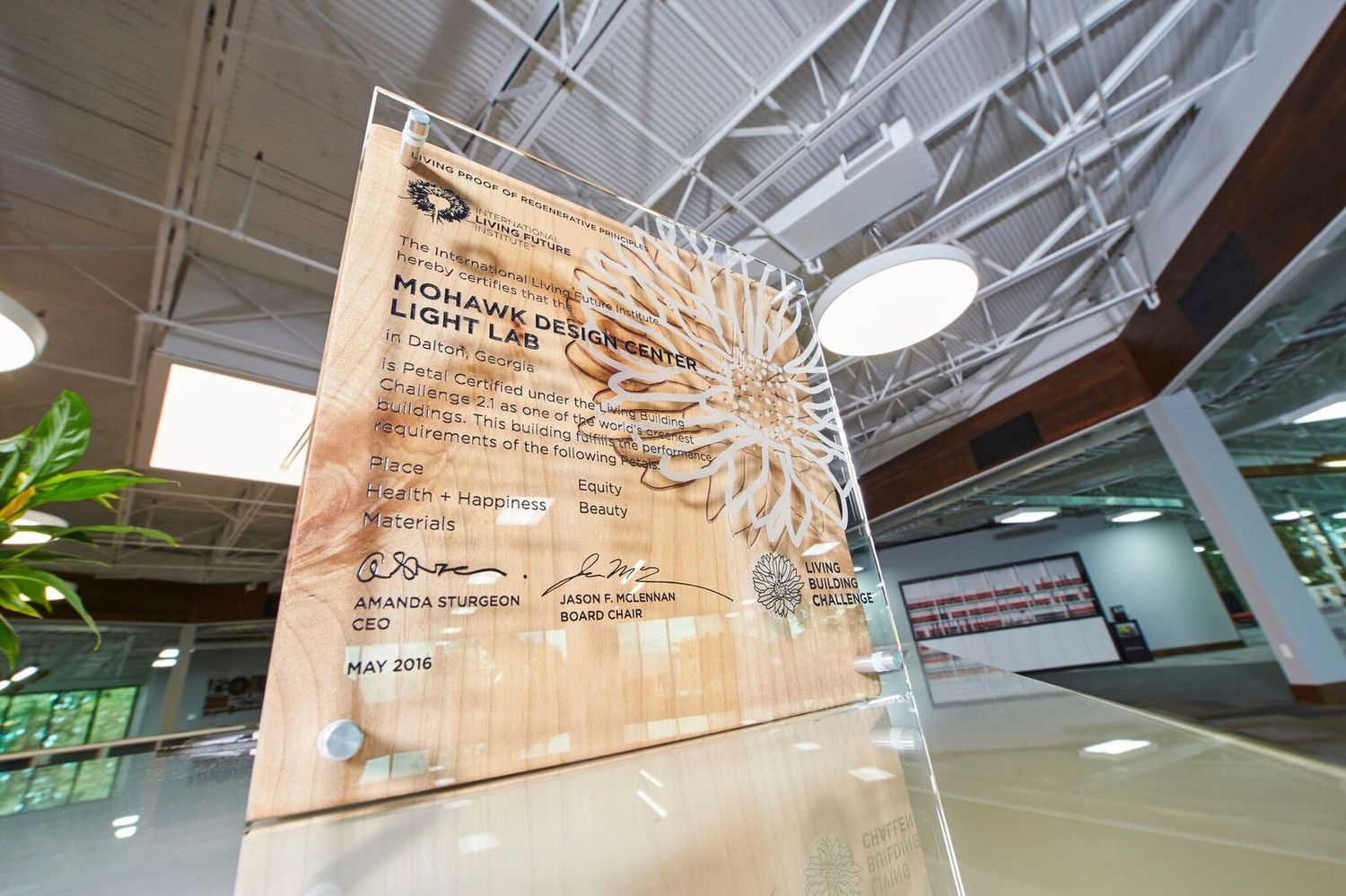“Mohawk wanted a more open work environment and was interested in a paradigm shift in its culture with a space that fostered collaboration,” explains Odom of the challenge. “I found it imperative that in order for that process to be successful, the new design had to include light. I felt that having the entire concept revolve around light would impact not only the design process but the culture of the company.”
Taking advantage of the natural light afforded by an existing overhead skylight, the Light Lab design revolves around a central open, collaborative hub situated beneath the light, which serves as the inspiration for the concept. Additional work and meeting areas radiate out from the hub toward perimeter windows that open onto views of the stunning mountainous landscape beyond. “Once the concept was selected, the entire class jumped into the project and did the design development, breaking into various teams to cover specific aspects of the design including FF&E, space planning and artwork and detailing,” says Robinson. “It all came together as one presentation, and the Mohawk people loved it.”
Working with the in-house design team from Mohawk Group, the students chose to fit out the space with a mix of recycled materials Mohawk had warehoused, plus new furnishings and finishes that avoid the 22 toxic chemicals and substances on the LBC’s red list. Since Teknion is the only office furniture manufacturer to produce workplace products that meet the disclosure requirements of LBC’s Declare label, which concisely reports the elements in a product similar to what a nutrition label does for food, several of its products were chosen to furnish the workspaces and meeting areas. “The inclusion of red list-free products was a driver in our vision to create a healthy, beautiful workspace for our employees,” says Dettmar. “Since Teknion has the same commitment to eliminating toxic ingredients in its products as Mohawk does, it was a natural partnership.”
Among the Declare-labeled products that contribute to the inspiring and healthy new space are 76 Interpret District workstations with District storage, District desk and filing systems in 13 private offices that project out from the core like spokes, and Projek chairs throughout the work areas. “Red list-free products are important in the industry because sustainable design has shifted from a prescribed approach to a transformative and restorative way of supporting human health,” says Tracy Backus, Director of Sustainable Programs for Teknion. In addition, Fractals seating from Studio TK defines four informal lounge areas around the central hub and flanks two large Expansion work tables, custom-engineered to accommodate Mohawk carpet samples. The tables are surrounded with Studio TK Juntura stools and provide a collaborative place to work.
Teknion’s ability to customize products to meet aspects of Mohawk’s red list-free requirements was an added bonus. “The dealer offered a red list-free linoleum option for workstations and tabletops. Plus, a wide array of fabric color choices for chairs and accent pieces helped us meet our design objectives and achieve our desired palette with one company,” says Dettmar, who notes the palette is derived from Mohawk Group’s own red list-free textured biophilic carpets, which were used on the floor.
For workers who place a premium on design, beautifully crafted furnishings with a wide range of finish options were also important. “Our designers appreciate the aesthetics of the furniture and the custom-configured storage that allows them to be functional with their tools such as yarns, color swatches, carpet samples and CAD drawings,” adds Dettmar. “Teknion steered us in the right direction to create beautiful, clean and light functional stations with the flexibility to integrate the storage our designers really need.”
Contributing to the Materials and Health and Happiness Petals of the LBC criteria, a few sit-to-stand Livello worksurfaces in communal touchdown areas allow workers to bring a laptop to these locations and afford them the option to work while standing. Variable chairs provide comfortable ergonomic seating in the training area known as Mohawk University. “In addition to being a healthy, beautiful workspace for our employees, it’s also a wonderful showcase for our customers and allows us to give the institute more exposure and educate people on the LBC and the importance of transparency as well as the elimination of red list materials,” says Dettmar.
“It’s a living lab that shows how materials have one of the largest impacts on human outcomes,” adds Backus, who notes that projects like this one also serve as an opportunity to show leadership, conduct conversations and facilitate educational forums for people who are interested in restorative sustainability.
The environment is also likely to serve as a helpful recruiting tool for future employees, according to Dettmar. “We’ve hired a lot of SCAD grads over the years, so the space will be exciting for young people to work in and will help us retain and attract talent,” she explains. It’s also the first SCAD-designed project that’s actually been built—and a dream come true for Odom, who hopes it will serve as inspiration for design students of the future.

“Mohawk wanted a more open work environment and was interested in a paradigm shift in its culture with a space that fostered collaboration”

Fractals seating from Studio TK define four informal lounge areas around the central hub and flank two large Expansion work tables, custom-engineered to accommodate Mohawk carpet samples.

Completed in March 2016, the new 33,000-square-foot project, which will house the company’s product design group, is destined to become the first LBC-certified project in the SouthEast region of the U.S.